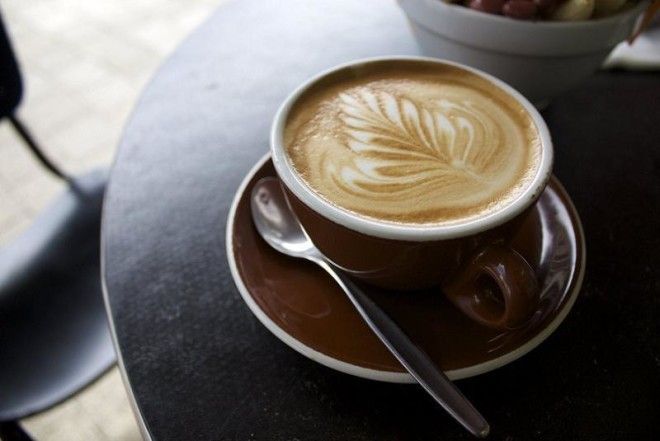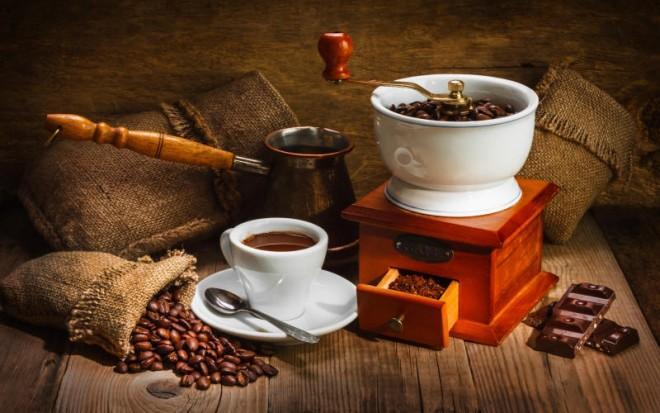In honor of National Coffee Day, which took place on September 29th, we’ve chosen a handful of countries around the world and assessed their coffee cultures just for you:

The United States is a nation of coffee drinkers. Each year, Americans drink 146 billion cups of coffee, more than any other country in the world. Tea is nice for afternoons, or when you're feeling under the weather, but Americans by the hundreds of millions don't consider the day officially started until there's coffee.
With the relatively recent upswing in at-home and freelance workers, coffee shops such as Starbucks have become popular places to get work done. This goes a long way to explaining why Americans pay an average of $3.28 per coffee drink.

Mexico has a habit of getting things right in the kitchen, and coffee is no exception. Authentic Mexican coffee, known as Café de Olla, is served in a ceramic mug with a narrow top, to keep in the heat, and with a cinnamon stick jammed into it. The spicy undertone practically lights the coffee taste on fire and leaves a finish that lasts until you get to the office. The drink is traditionally served to guests at wakes, which can last all night – hence the coffee.
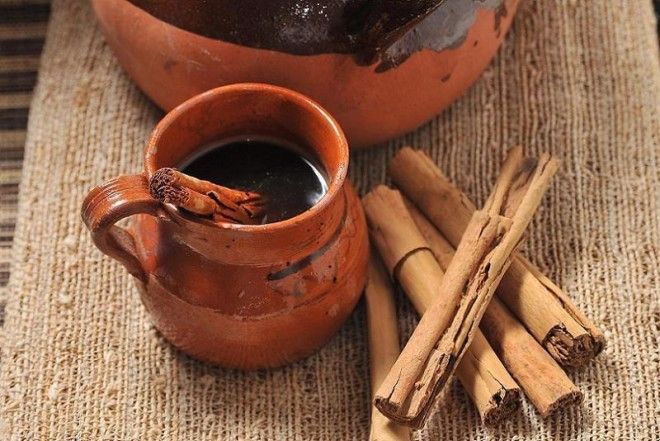
Italy
Most of the fun of traveling is seeing how different societies approach problems in different ways. In the case of espresso, which is a short, strong jolt of concentrated coffee, it answers the problem of how busy people are supposed to get their morning eye-opener.
In the United States, the answer is to pour an expensive drink into the largest paper cup possible. In Italy, the solution is to serve the drink in a ceramic cup, but in such small portions that it can be gulped and left behind. Sometimes, a slice of lemon is rubbed over the rim for flavor.

Turkey
While coffee is a traditional morning drink in most places, in Turkey it's treated almost as a dessert. Turkish coffee is, according to a local proverb: "black as hell, strong as death, and as sweet as love." Turkish coffee is served at temperatures that would trigger lawsuits in America, often with candy and usually after dinner.
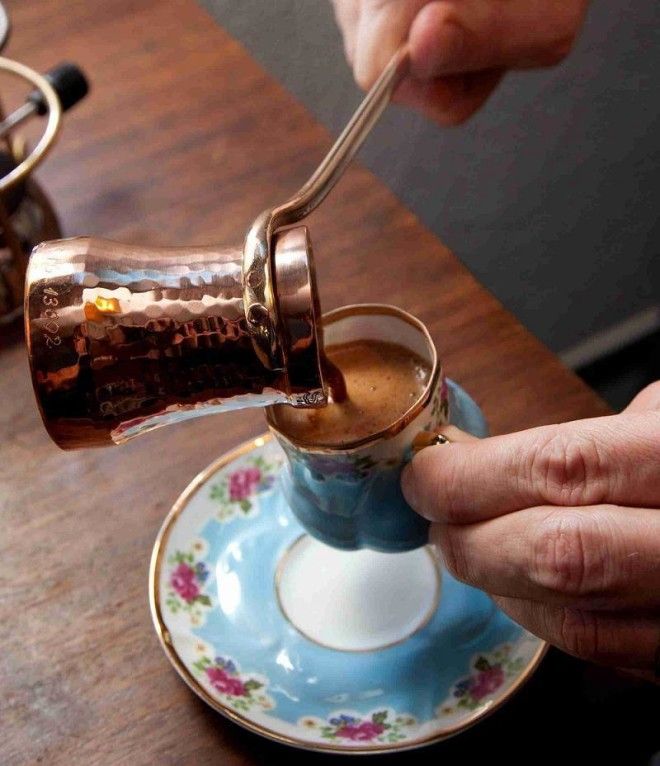
Ireland
Most of what Americans think of as "ethnic" food and drink is actually a Disneyfied version of something that was actually invented in the United States. Irish coffee is an exception to this – it really was invented in Ireland in the 1940s. The drink starts with coffee, adds whiskey, and finishes with a whipped cream topper.
American cultural imperialists can claim a moral victory, however, since the Irish coffee seems to have been invented for American servicemen who stopped at Foynes, on Ireland's west coast, to fuel up the flying boats that patrolled the North Atlantic for German submarines. Foynes was also a stopover for connecting flights for American tourists and VIPs traveling elsewhere in Europe. The drink found its way to San Francisco in 1952.
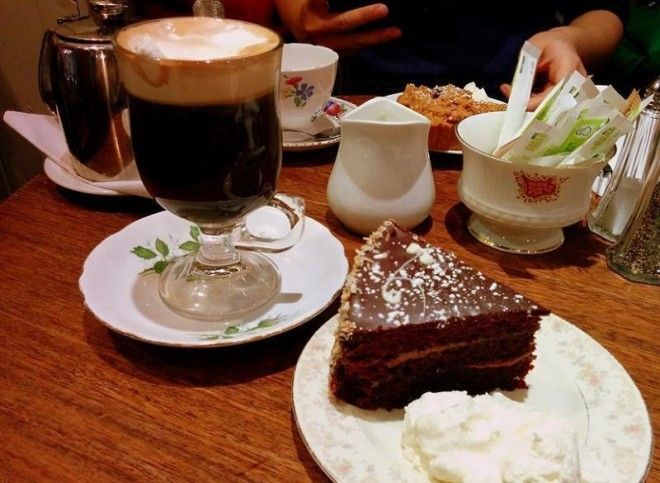
The Netherlands
Displaying the general niceness of the low countries, coffee in the Netherlands is served plain, but with a small sugar cookie on the side. The Netherlands draws a distinction between a coffee house (koffiehuis), and a café, which also serves cannabis. The cafés aren't allowed to serve alcohol, or any other kind of drug, and if you're a tourist, cafés outside of Amsterdam might refuse you entry. This rule is part of a 2012 initiative to crack down on “marijuana tourism.”

France
French coffee is often flavored and served in a wide-mouthed cup. This helps – no kidding – with dunking baguettes. In France, the standard drink is un café, a small cup of espresso. A café americaine is larger, naturally, but diluted with hot water. Interestingly, a single coffee shop in Paris may have three different prices for the same drink, depending on whether you plan to drink it at the bar, at a table, or outdoors.
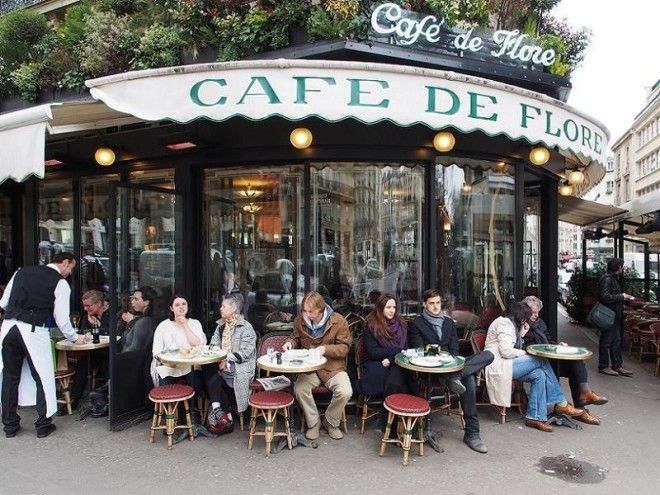
Greece
Not every Old World country has a centuries-old tradition for brewing native coffee. The Greek frappé, for example, is actually made with freeze-dried instant coffee, sugar, and evaporated milk. The drink is served cold and, if the café owner spots you for a tourist, you will be overcharged. Outside the home, most Greeks get their coffee from either a kafeteria or a kafenio.
The former is a smallish restaurant where coffee is served with food, while the latter is much more coffee-oriented, with food as almost an
afterthought. Until relatively recently, kafenios were regarded as rough, unpolished places that mostly excluded women. Things have changed in recent decades, though, and the legal and social barriers to female kafenio customers have come down.

England
England has always been torn between coffee and tea as national obsessions. Tea was first served in England in coffee houses, the first of which opened in 1650. These houses, stocked with the coffee, tea, and tobacco that streamed in from Ceylon, Jamaica, and the Carolinas, were an instant hit.
Unlike rowdy taverns, coffee houses were good places to meet, catch up with news, and conduct business. Edward Lloyd, for example, started a coffee house in London in 1688, which quickly became the premiere vendor of maritime insurance for the British trading fleet. Today, Lloyd's of London is still selling insurance, with revenues in the billions.
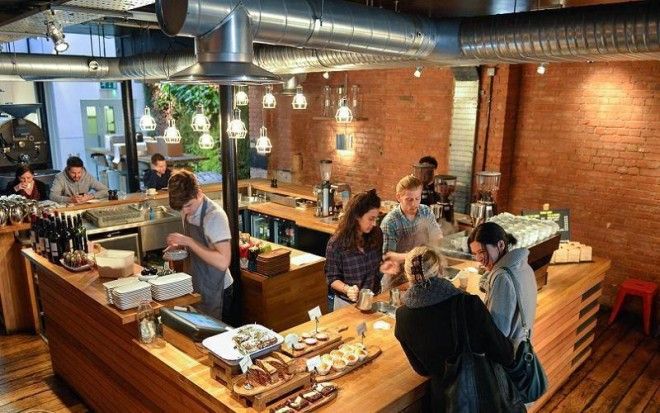
Cuba
Cuban coffee is a mixed bag. Coffee is as popular in Cuba as it is anywhere, and the Cubans pour their drinks in shots of almost Turkish strength, but the embargo imposes some hardships. For several years in the 1990s, citizens' coffee rations were mixed with ground beans as bulk filler. “Cuban-style” coffee, which in the United States has to be made with non-Cuban beans, is brewed very strong and sweet. Authentic Cuban coffee, which is mainly exported to Japan and France, has a very high concentration of caffeine. Recent detente between Havana and Washington may make genuine Cuban coffee available in the United States for the first time since 1963.
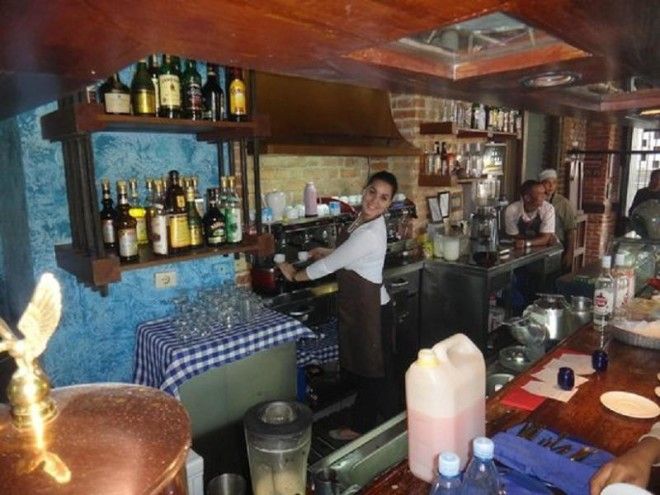
Yuanyang is Hong Kong's good-natured attempt to resolve the coffee-versus-tea debate. This drink, which is named for a species of duck that mates for life, combines strong black tea with coffee and milk.
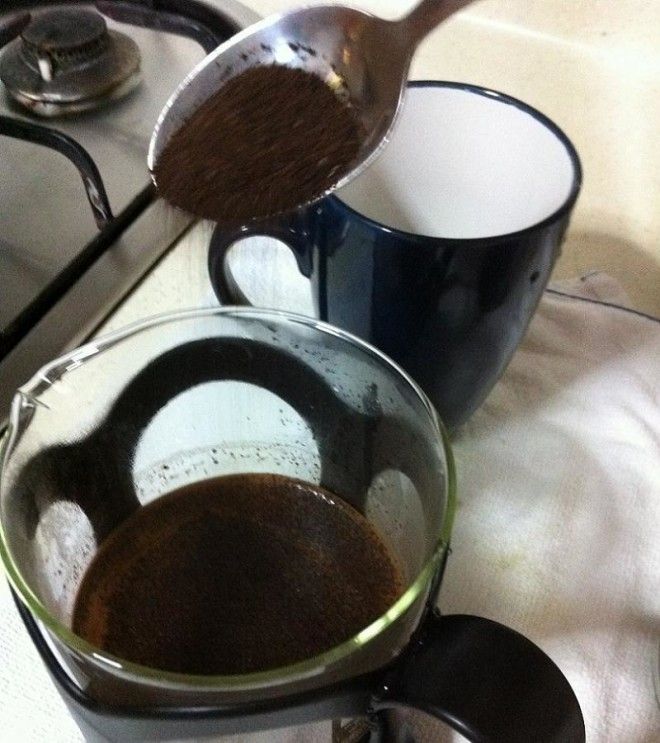
India
Indian coffee is sold "by the yard," or "meter-high." The length is a reference to how far apart the vessels should be held when preparing the drink. Indian Kaapi is brewed ridiculously hot, then poured from one stainless steel container to another – at a distance of about three feet – to aerate it. During this back-and-forth pouring, the coffee develops a good head of foam. The final product has a strong flavor, since it's brewed with chicory.
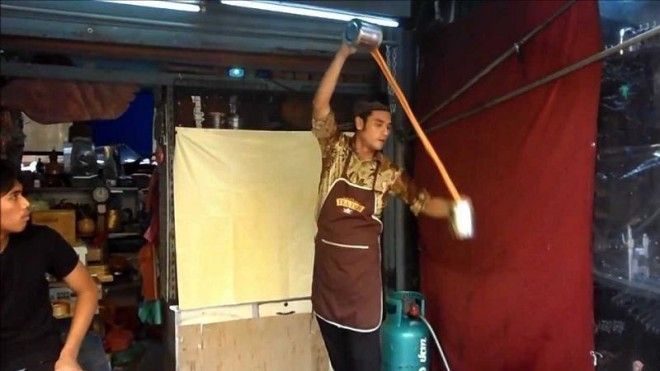
Russia has traditionally favored strong tea over coffee, but coffee culture has been changing for decades. Russia now leads the world in the consumption of instant coffee, and coffee shops have been growing like weeds all over the country since the fall of the Soviet Union.
Interestingly, some Russian coffee shops are pioneering a totally novel business model. In the anti-café model, customers get free food and drinks, but pay for time at a table with discounts for bulk reservations. It remains to be seen how profitable this model will be in the long run, but it does encourage people to linger over their drinks until the timer runs out.
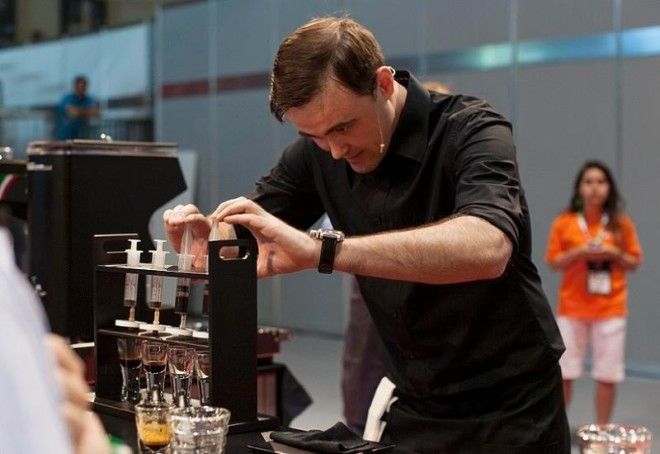
Japan
Japanese coffee culture has developed in waves over the last century. Like Russia, Japan is traditionally a tea-drinking country, but the iced coffee was popular in the country as far back as the 1920s, and may have been invented there. After the war, Japan was occupied by tens of thousands of American soldiers who brought the American taste for coffee with them. Unfortunately, Japan could only import lower-quality beans at the time, and few native roasters could produce a good, strong cup. All this changed in 1971, when the Japanese coffee giant Doutor was founded. Essentially a Japanese Starbucks, it kickstarted the trend of starting busy office workers off for the day with a caffeinated punch in the face.
Doutor coffee is often served to standing customers who are on their way somewhere; the artisan coffee culture of the West, in which the café becomes a "third place" for people just to hang out, hasn't really caught on in Japan, though it's a rare city block or train station that isn't blanketed with coffee shops of all kinds.
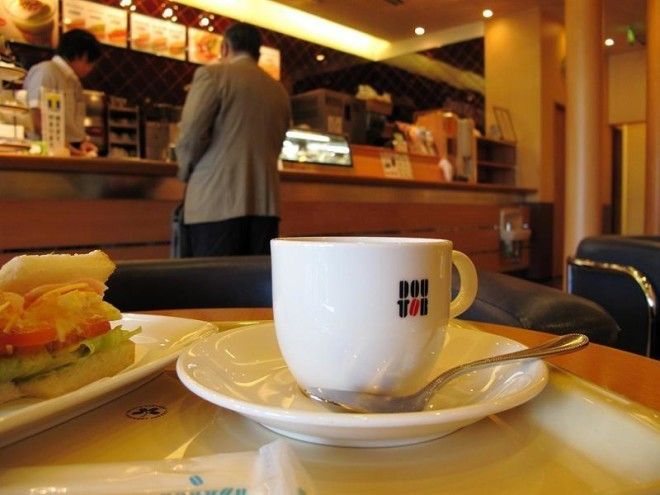
Saudi Arabia
Alcohol is illegal in Saudi Arabia (unless you're related to somebody important), and possession of drugs will get you killed. That leaves coffee as the go-to stimulant for most of the country. Saudi coffee is served black and flavored with cardamom. It's horribly bitter, so there's usually a bowl of dates to cut the flavor. As with most things in a patriarchal dictatorship, there's a strict protocol for serving coffee: Men drink with men, women with women, elders get served first, and nobody leaves until the last drop is gone.
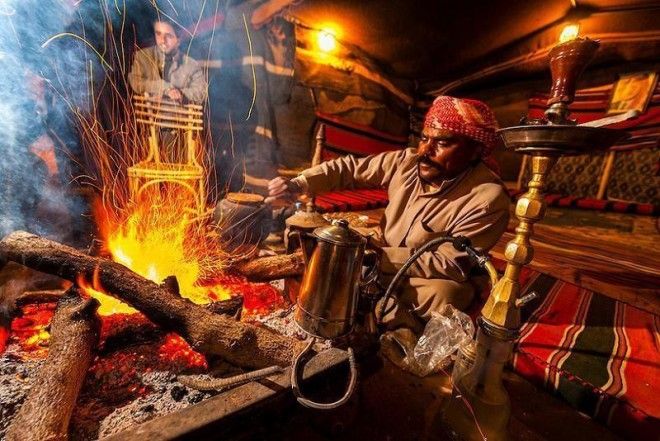
Vietnam
In Vietnam, people drink Ca Phe Sua Da. This is made by pouring condensed milk into a cup, then laying a steel mesh over the top with coarse-ground coffee on it. Pour hot water through the mesh, then drink it with friends.
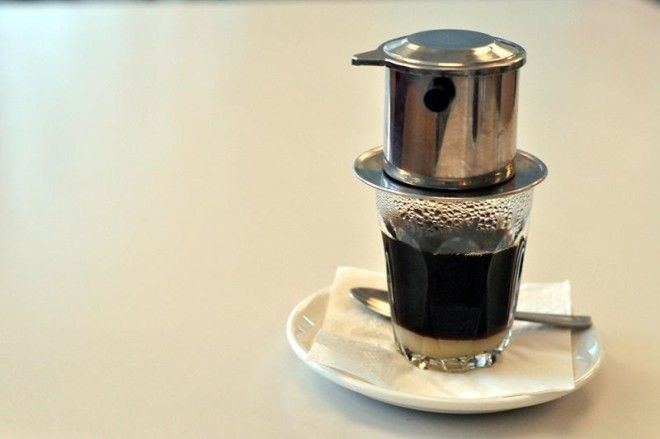
Ethiopia
People have been drinking coffee in Ethiopia as long as anybody, and an elaborate system of conventions has grown up around it. Buna is strong coffee, brewed over several hours, then poured in small quantities and flavored with salt and butter, rather than sugar and cream. Incidentally, the US Navy also has a tradition of brewing coffee with a dash of salt. It takes some getting used to, but it can be habit forming.
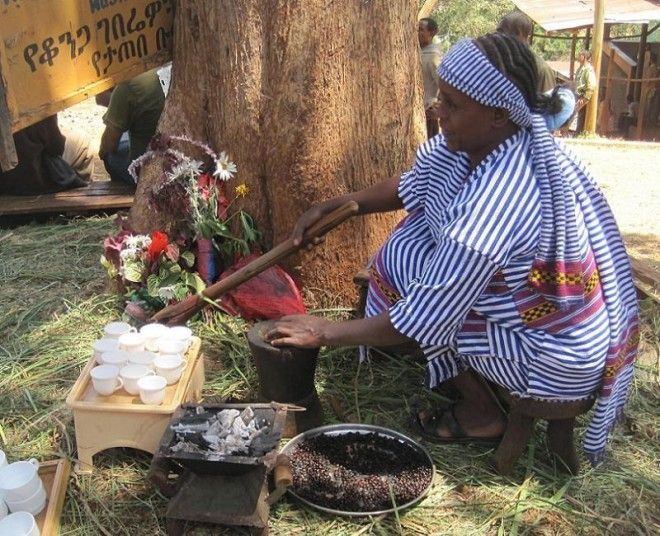
Indonesia
If you come up with something good, such as coffee, somebody somewhere will figure out something weird to do with it. Such is the case with kopi luwak, which is a nice combination of exotic and just gross. To get a proper cup, kopi beans have to pass through the digestive tract of a civet, a mustelid closely related to weasels, and harvested in the animal's droppings. The beans are then hosed down (one hopes) and roasted. Like most very silly things, luwak coffee is absurdly overvalued, with a pound selling for around $150.
As you could probably guess from the price, kopi luwak is mostly sold to tourists or sent off for export, mainly to Japan and Taiwan. Some specialty shops sell kopi luwak by the cup at between $35 and $60 a pour. The harvesters, who have the job of collecting Indonesian weasel dung, make around $10 a pound – of beans, not feces.

Australia and New Zealand
Australia and New Zealand have developed a form of latte (which is emphatically not a latte! Ask anyone from Australia or New Zealand! Not a latte!) that is, at bottom, just coffee with milk in it. What makes the flat white unique is the pedantic set of rules for making one.
The milk has to be steamed, then the bit you use for the drink has to be drawn from the bottom, rather than the top, of the steaming vessel. Numerous conventions have sprung up about how to pour the drink, how or whether to sweeten it, and so on. Basically, it's the cricket of coffee – like baseball, but with more rules than contract bridge.
